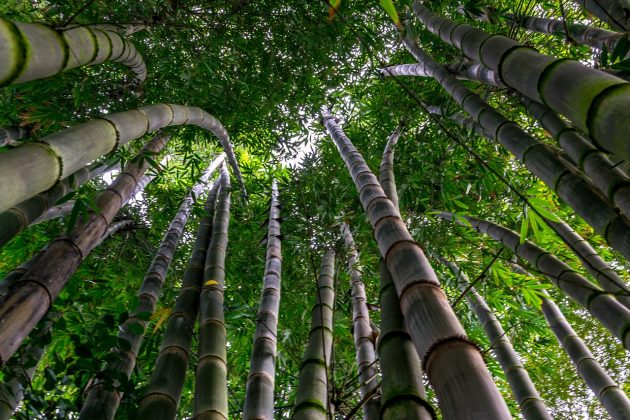In a world where fast fashion exists alongside a sharp rise in eco-conscious consumerism, it shouldn’t surprise anyone that fabrics such as bamboo are growing in popularity.
There are many benefits to the escalating use of bamboo. From its greater environmental credentials to its comfort and style options, bamboo offers something to everyone, with few drawbacks or limitations.
Vivid & Versatile
From a purely utilitarian perspective, bamboo is wonderfully versatile. It can be made into a range of garments, including (but not limited to) bamboo underwear, hosiery, t-shirts, dresses, pants, hats, and bags. For consumers of fashion, this presents an almost limitless array of options.
Bamboo is also easily transformed and dyed – meaning that it can resemble any number of more familiar fabric choices. It can often do so without the ill-effects of other clothing processing methods – meaning a lesser impact upon the environment and resources.
Caring Comfort
Easy to care for and comfortable, bamboo is fast becoming the number one choice of those who want simple – and luxurious – clothing which is appropriate for all occasions.
Bamboo can be washed and worn with a minimum of fuss, and doesn’t require the meticulous storage of other natural fibres such as linen or silk. Bamboo fibres easily wick away moisture which promotes greater circulation of air – meaning that your precious fashion items are less susceptible to mould, must or moths.
Conscious Consumption
If you’re serious about moving towards more sustainable fashion, then bamboo is an excellent choice. Bamboo requires a fraction of the resources a traditional garment fibre such as cotton does – meaning that precious water supplies and crop irrigation can be managed in areas where drought or water management are issues.
The move towards ethical fashion is happening now more quickly than ever. The damage caused by the fast fashion industry and the thirst for quicker access to current fashions has meant that supply chains have often relied on cheaply-produced items made from synthetic and natural fibres, with little regard paid to the ethics of their manufacturing.
Manufacturers of bamboo garments often make the move to using bamboo in order to curtail the damage done by other garment makers, and are (usually) quick to tout the benefits of bamboo, while also being transparent about their supply chain. In the age of the internet and the rise of the consumer-as-advocate, it’s now more important than ever that companies who are serious about their eco-credentials are able to point customers directly to their resources, methodologies, and processes so that consumers can make informed decisions.
Climate Concerns
Bamboo is cool in summer and warm in winter – making it the smart choice for anyone interested in an adaptable, functional wardrobe. Bamboo has the ability to draw moisture away from the skin without seeming clammy or wet, encouraging quick drying and greater comfort to the wearer.
It’s often light enough to be worn in multiple layers too – which is great for changeable weather or in situations where a quick change of clothing is required. Bamboo undergarments come in an array of designs which are lightweight enough to make them an excellent choice for travellers.
There are a multitude of reasons why bamboo and other eco-friendly fibres are finally taking hold of the fashion world. As the desire for clothing which is both environmentally responsible and fashionable grows, the market for garments made from bamboo will only grow – meaning that garment manufacturers relying on other more resource intensive fibres will have to invest in smarter technology or provide more ethical options – a win/win equation for consumers (and for mother nature).
